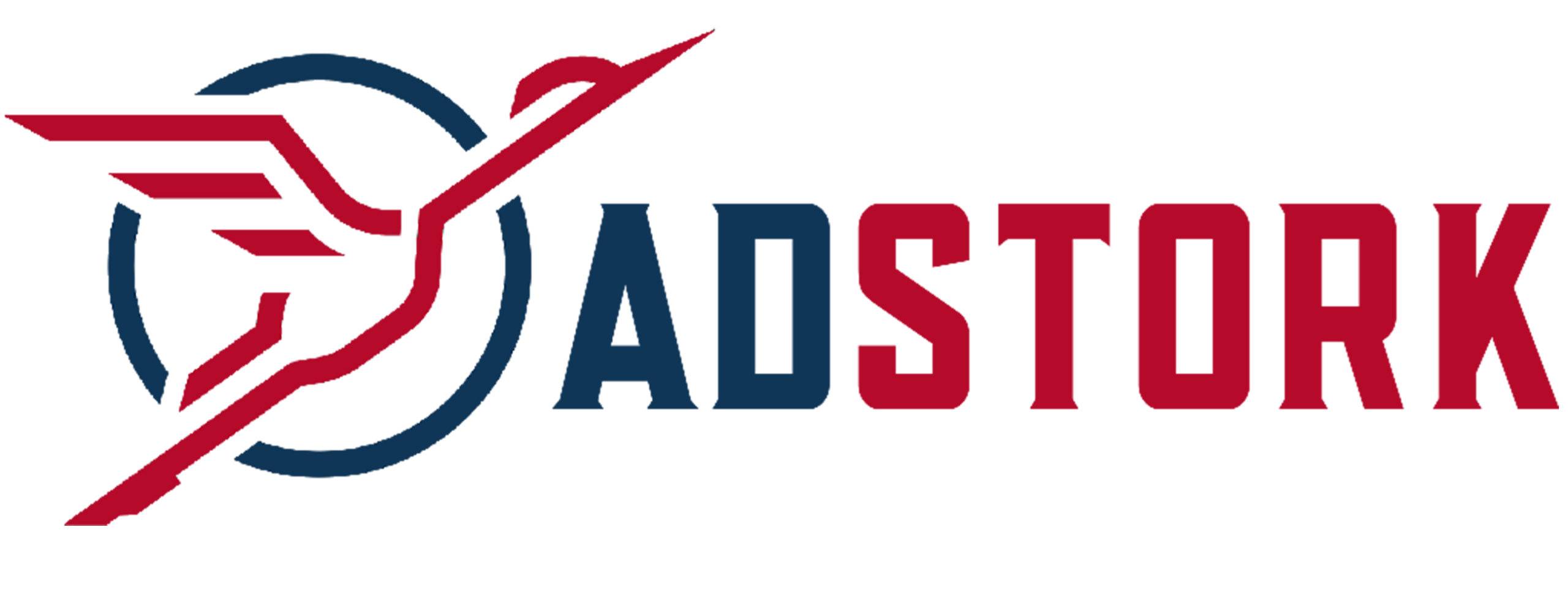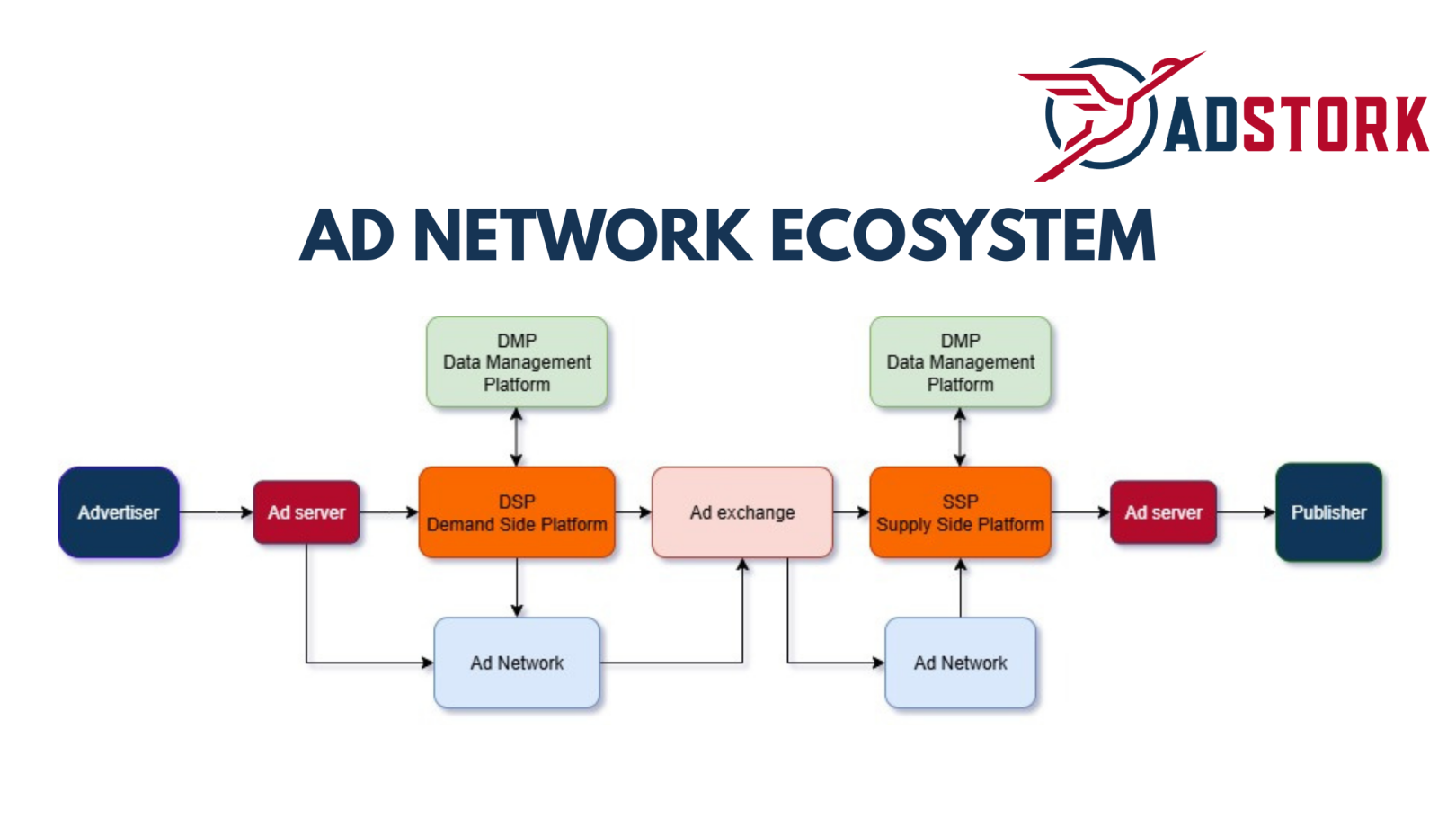- August 28, 2025
- by Adstork
The Ultimate Guide to Ad Network Operations and the Digital Advertising Ecosystem
Introduction: The Changing Face of Digital Advertising
Digital advertising is no longer as simple as “buy an ad, get a click.”
Instead, it has evolved into a highly competitive, multi-layered ecosystem where advertisers chase attention, publishers struggle to monetize, and both sides demand more transparency and performance.
At the heart of this system are ad networks — the matchmakers connecting advertisers with publishers. By aggregating inventory and optimizing campaigns, they provide scale, efficiency, and measurable results.
But not all ad networks are created equal. Some lack transparency. Some suffer from fraud. Others overwhelm advertisers with too many choices (paradox of choice).
This guide breaks down how ad networks operate, the challenges they face, and how smart agencies like Adstork Ad Network are rewriting the rules with trust, innovation, and growth.
1. How Ad Networks Operate: The Matchmakers of Digital Media
Ad networks are digital connectors. They aggregate ad space from publishers and sell it to advertisers.
Typical workflow:
- Publisher Onboarding → Publishers integrate ad tags/SDKs to make inventory available.
- Advertiser Setup → Advertisers define goals, budgets, and creatives.
- Ad Matching & Targeting → Algorithms decide the best audience fit.
- Ad Serving → Ads delivered in real-time.
- Reporting & Payouts → Metrics tracked, revenue split, network commission deducted.
2. Types of Ad Networks
- Vertical Networks → Niche categories like gaming, health, or finance.
- Premium Networks → High-quality publishers, brand-safe environments.
- Performance Networks → Focused on CPA, CPL, ROI.
- Format-Specific Networks → Mobile, native, video, or CTV.
3. Ad Serving Architecture: Behind the Scenes
Ad serving is what makes ads appear almost instantly when you load a page.
- Ad Tags trigger ad requests.
- Ad Servers choose the right ad.
- CDNs deliver content globally in milliseconds.
Optimization matters: latency (ads must load fast), scalability (traffic spikes handled smoothly), and tracking accuracy.
4. Ad Tracking & Analytics: Data is the New Currency
What gets measured gets improved.
- Impressions → How many times ads display
- Clicks → Interactions recorded
- Conversions → Actual actions (sign-ups, purchases)
Advanced metrics: eCPM, CTR, viewability, attribution.
5. Monetization Models: Choosing the Right Path
| Model | Advertiser Pays | Publisher Earns | Use Case |
|---|---|---|---|
| CPM | Per 1,000 impressions | Per 1,000 ad views | Awareness |
| CPC | Per click | Per click | Traffic |
| CPA | Per action | Conversion | E-commerce |
| CPL | Per lead | Lead submission | B2B |
| CPI/CPV | Per install/view | Installs/video completion | Mobile/Video |
6. Key Players in the Ad Ecosystem
- Advertisers → Set goals, budgets, creatives.
- Publishers → Provide inventory.
- Ad Networks → Aggregate and optimize inventory.
- Ad Exchanges, DSPs, SSPs → Power programmatic transactions.
- DMPs & CDNs → Manage audience data and ad delivery.
- Agencies/Brokers → Strategy, media planning, execution.
7. Advanced Technologies & Auctions
- Header Bidding → Increases CPM by letting multiple buyers compete.
- Real-Time Bidding (RTB) → Ads bought in milliseconds.
- DMPs → Power retargeting and lookalike modeling.
8. Challenges in Digital Advertising
- Transparency → Opaque fees erode trust.
- Ad Fraud → Bots and fake clicks drain budgets.
- Brand Safety → Risk of appearing in harmful environments.
- Ad Blocking → Users skipping ads entirely.
9. Regulations & Privacy
With GDPR, CCPA, and privacy-first models, ad networks must respect consent and data ethics.
Future opportunities lie in first-party data and contextual targeting.
The Adstork Advantage: Where Networks Meet Growth
Most ad networks stop at connecting supply and demand. Adstork Ad Network goes further.
-
Transparency-first reporting → Clients know exactly where every dollar goes.
-
Fraud protection → Clean traffic, real users, stronger ROI.
-
Cross-format monetization → Display, native, video, mobile, CTV.
-
Global reach → With advanced ad serving architecture and CDNs.
-
Client-first design → Fewer choices, clearer packages (curated to convert).
At Adstork, we don’t just run ads. We build campaigns engineered for growth.
FAQs: Ad Networks & Adstork
Q1: Why should a brand work with an ad network instead of going direct to publishers?
Ad networks provide scale, targeting, and optimization that individual publishers can’t.
Q2: How does Adstork prevent ad fraud?
We integrate third-party verification and advanced fraud-detection to ensure clean traffic.
Q3: Do ad networks work for small businesses?
Yes. With flexible pricing (affordability illusion), small brands can scale campaigns affordably.
Q4: How does Adstork handle privacy regulations?
We are fully compliant with GDPR, CCPA, and focus on privacy-safe, ethical advertising.
Q5: What makes Adstork different from other ad networks?
Transparency, performance-driven models, and neuromarketing-powered strategies that improve engagement and conversions.
Final Word
The ad network ecosystem can often feel complex and overwhelming, from integrations and targeting to fraud prevention and optimization. At Adstork Ad Network, we simplify it all. By combining cutting-edge technology, full transparency, and proven marketing psychology, we create advertising campaigns that don’t just run. They perform with measurable impact, driving real growth and ROI for publishers and advertisers alike.


